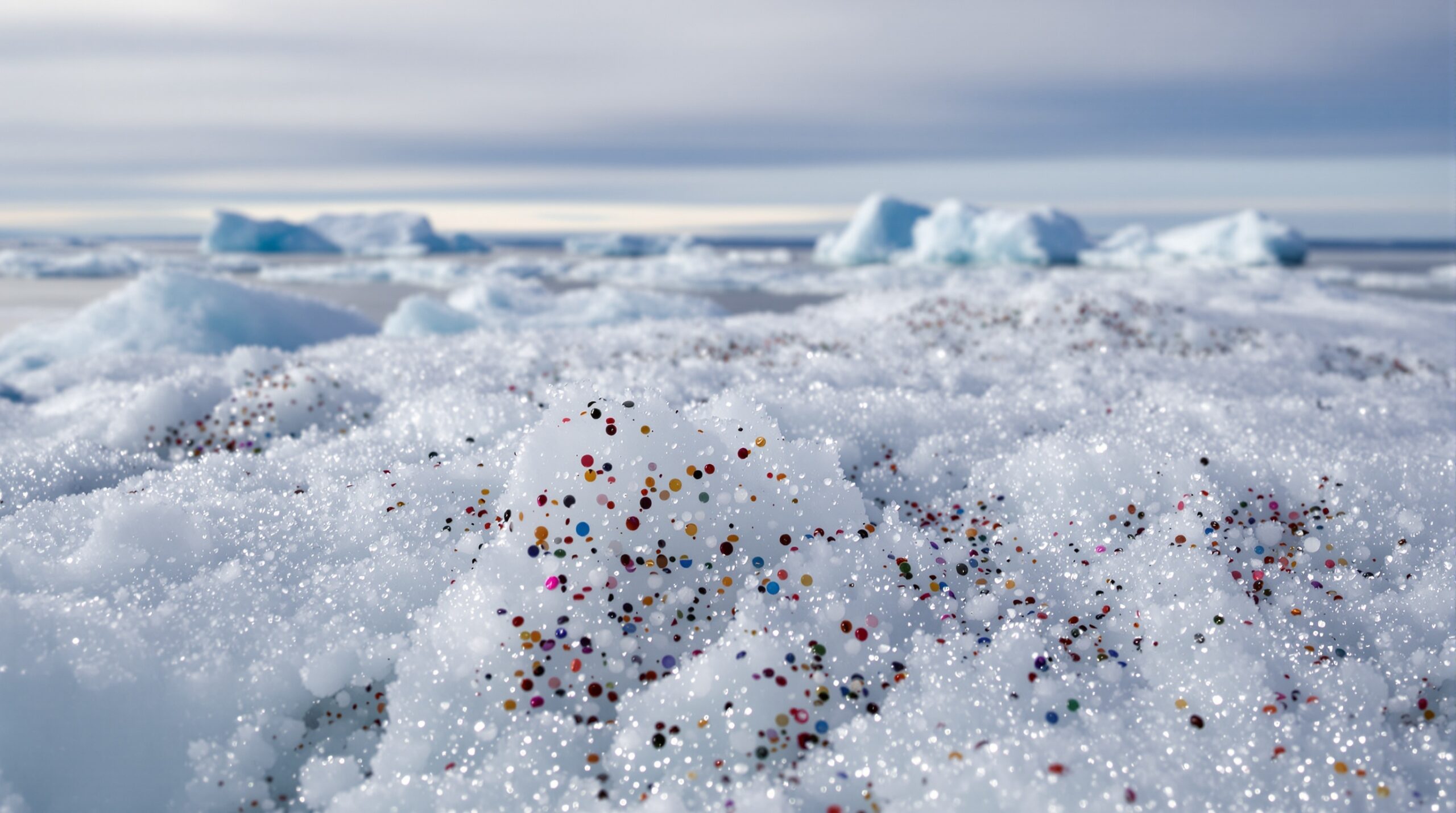Deep within the remote and seemingly pristine landscape of Antarctica, scientists have made a troubling discovery. Tiny plastic particles, known as microplastics, have been identified in freshly fallen snow. This finding challenges long-held beliefs regarding the continent’s insulation from pollution generated by human activities. The presence of microplastics in Antarctic snow prompts urgent questions about environmental health, wildlife impacts, and the pervasiveness of plastic contamination worldwide.
Understanding Microplastics
Microplastics are plastic fragments smaller than five millimeters in diameter. These particles originate from a variety of sources. Some come from the breakdown of larger plastic waste, such as bottles and packaging. Others are intentionally manufactured for use in products like exfoliating facial scrubs, industrial abrasives, or synthetic clothing fibers.
Microplastics are lightweight and durable, allowing them to travel long distances through air and water. Their increased presence across the globe reflects the persistent nature of plastic pollution. As they infiltrate natural environments, microplastics can cause physical and chemical harm to animals and potentially disrupt entire ecosystems.
First Discovery in Antarctic Snow
A groundbreaking study conducted by New Zealand researchers documented microplastics in fresh snow from Antarctica for the first time. Experts collected snow samples from 19 sites near McMurdo Station, an important research facility on Ross Island. Analyses revealed that every sample contained fragments of plastic, sometimes in surprising concentrations.
This discovery is particularly alarming given Antarctica’s reputation as a largely untouched wilderness. The spread of microplastics in this region highlights their ability to reach even the most remote locations on Earth. It also signifies that human impact on the environment has extended significantly further than previously thought.
Possible Sources of Contamination
The origin of microplastics in Antarctica remains an active area of investigation. Scientists suspect several potential pathways for these materials to reach the ice-covered continent. Local human activities, such as operations around research stations and logistical routes, can introduce plastic debris. The clothes and gear worn by researchers could shed synthetic fibers. Waste management and improper disposal also contribute to the contamination.
However, microplastics can also travel vast distances by wind and ocean currents. Atmospheric transport allows microscopic particles to reach isolated places, including polar regions. Previous studies found microplastics in Antarctic seawater and sediment, but the new evidence from snow indicates the role of atmospheric deposition. This means that airborne microplastic pollution is an international problem, crossing boundaries and evading traditional control measures.
Environmental Threats from Microplastics
The presence of microplastics in Antarctic snow raises multiple environmental and ecological concerns. Once these particles settle on snow or ice, they can alter the surface’s physical properties. Dark-colored plastics absorb more sunlight than white snow, contributing to local warming and enhanced ice melt. This additional melting can accelerate glacial retreat, impacting global sea levels and disrupting delicate polar habitats.
Wildlife faces significant risks as well. Antarctic ecosystems rely on small invertebrates, fish, and birds, which could ingest microplastics accidentally while foraging. Some studies observed microplastics in the digestive tracts of Antarctic krill and seabirds. The plastics can cause internal injury, blockages, or exposure to toxic chemicals. These effects harm individual organisms and potentially disrupt food webs in an already fragile environment.
Broader Implications for Global Pollution
The Antarctic microplastics discovery resonates beyond the continent’s borders. Plastic waste production remains enormous, with millions of tons entering oceans and waterways each year. The finding demonstrates that even strict waste management practices cannot prevent the worldwide dispersal of synthetic debris.
Because microplastics are carried by the wind, global cooperation is essential to reduce plastic pollution. Regions geographically distant from Antarctica still contribute to its contamination. This phenomenon challenges the assumption that isolated areas remain safe from human-caused pollution. Policies focused only on local solutions cannot address the full scale of the issue.
Challenges in Removal and Remediation
Once microplastics reach sensitive environments like Antarctica, removing them is almost impossible. The particles are often too small to collect or filter efficiently. Additionally, clean-up activities could disturb habitats and introduce new pollutants. Remediation demands innovative approaches, including preventing plastics from entering the environment in the first place.
Efforts to reduce future contamination must focus on global production, improved waste management, and the development of biodegradable alternatives. Research into new materials and stricter regulations on plastic exports could help limit further damage. International treaties like the Protocol on Environmental Protection to the Antarctic Treaty provide frameworks, but effective enforcement is challenging and requires continuous dedication.
Ongoing Research and Monitoring
Scientists continue to monitor the spread of microplastics in Antarctica, examining trends and patterns of contamination over time. Increased surveillance of atmospheric, marine, and terrestrial samples will help determine where the pollution is most severe. Researchers also seek to understand how microplastics interact with Antarctic ecosystems at chemical and biological levels.
New methods for sampling and analyzing microplastics are under development. Standardizing these techniques will ensure that future studies provide comparable and reliable data. Comprehensive research allows organizations and governments to craft informed strategies for mitigation.
Conclusion: A Call for Global Action
The detection of microplastics in Antarctic snow serves as a stark warning signal for humanity. Even the planet’s most isolated environments face intrusion from human-made pollution. Addressing this growing crisis demands global cooperation, innovative technology, and a shift toward sustainable materials.
Policies must address both the creation and disposal of plastic products. Educational efforts can raise public awareness about responsible consumption and the dangers of microplastic contaminants. The fight to preserve Antarctica symbolizes a broader battle against pollution worldwide. Protecting this iconic region will require determination and united action from all nations.

